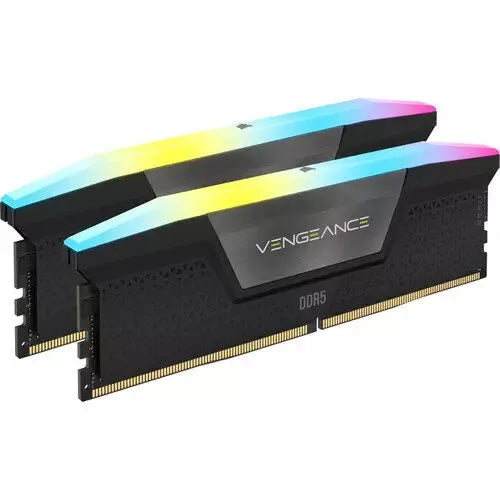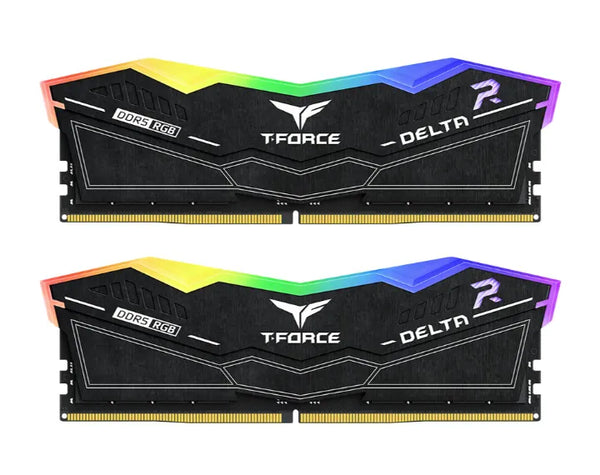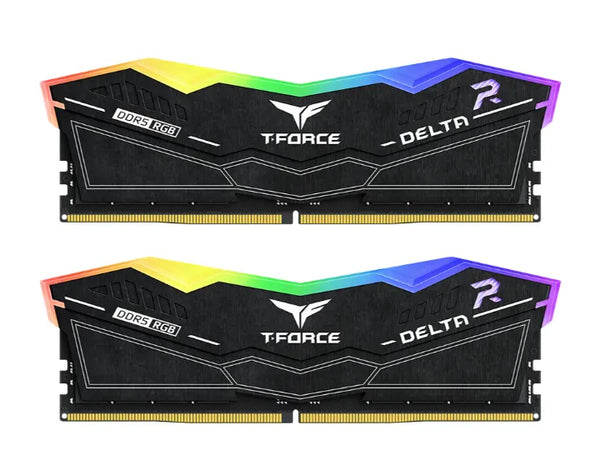DDR4 VS. DDR5 which RAM should you pick?
Posted by WAEL MOHAMED
Right after the release of Intel's 12th gen processor, we saw the launch of DDR5 supported motherboards and DDR5 RAM kits, and while we still have DDR4 motherboards supported by the same processors and there are other motherboards available for purchase supporting the older RAM modules we thought we give you a guide on the differences between DDR5 and DDR4 and whether you should spend the extra dirhams on the more expensive modules or invest them somewhere else that will be more rewarding towards performance.
Let's kick off this guide by mentioning the most drastic spec changes between the two generations and what difference each makes for everyday uses
Bandwidth and frequency
If we take JEDEC specification, which serves as the bare minimum for the memories supported without any overclocking or usage of XMP modes, you can find that DDR4 memories had a frequency ranging from 1600 to 3200, even though we never saw memories with 1600, and we saw 2133 MHz memories serve as the start of the line for the previous-gen memories.
The story is similar to DDR5 as it comes with a standard JEDEC base frequency ranging from 3200 as the start point, but you can not find any DDR5 memory kits with that frequency, As it builds upon the DDR4 and the lowest kit you can find will start at 4800 MHz.
That doesn't necessarily mean that DDR5 RAM kits come with more pins to connect to the RAM banks, It still sports the same 288 pins but with different notch placement to prevent the wrong usage with older DDR4 RAMs and motherboards… needless to say that DDR5 memories aren't backward compatible.
Architectural changes

Previously, we saw DDR4 memories come with a single channel of 64 bit per DIMM, and in DDR5 memories the architecture changed to make it dual 32-bit channels per DIMM, as well as doubling the burst length from 8 bit to 16 bit, all these changes in architecture makes the newer memories more efficient and turns the dual-DIMM DDR5 configuration into a 4 X 32 bit instead of 2 X 64 bit that is found on the DDR4 memories.
Better power efficiency

This change in DDR5 kits is the most drastic one, on the DDR5 memory modules you can find the power management ICs (PMIC) on the modules themselves instead of on the motherboards in the previous gen, this is a double-edged sword that made the motherboards cheaper for not including those ICs, but transferred the cost to the DDR5 modules, and that's why they’re costly in contrast to DDR4 memories.
Also, the global shortage in power management ICs drove the prices of DDR5 memories up and made them hard to find.
Away from the big talk about the architecture, these modules will deliver better efficiency in power delivery and will improve voltage regulation and signal integrity while reducing noise as well, better power efficiency in DDR5 memories also means that the starting operating voltage for them is 1.1V, which is better and more efficient than the 1.2V found in DDR4 memories.
That doesn't mean that modules will always come with a 1.1V, As most of the DDR5 RAMs will come with a higher frequency resulting in a voltage up to 1.35V, It's still better than the 1.6V that DDR4 RAMS achieved to reach 5000 MHz.
Performance changes

Here comes the most important part and the deciding factor, we all look for performance gains when buying a new high-end PC part, so based on the above spec changes, what are the performance gains we're looking to get out of the new DDR5 RAM modules?
Bandwidth gains: Tests carried out showed that DDR5-4800 CL40 delivered 112% more bandwidth than DDR4-2133 CL15 and 46% more than DDR4-3200 CL22.
And against DDR4-4000 CL16 there was a 19% margin making it a huge upgrade in terms of bandwidth gains that benefits compression and productivity programs the most.
Gaming gains: while testing the DDR5 in gaming, results were barely noticeable in comparison to DDR4 where the difference between DDR5-6400 C36 was 8% better than the DDR4-2133 C15, using a better DDR4 memory like DDR4-3200 C15 we saw an even slighter difference with only 2% better performance scored by DDR5-6400 CL36.
Should you buy DDR5 memories now?

That brings us to the most important question, Should you buy it now or opt for the older DDR4 memories?
While DDR5 is providing better power efficiency and higher frequencies, it will only benefit you in certain workloads, you won't see much of a difference in comparison to DDR4 memories while gaming.
So if you're a gamer, a DDR4 3200 MHz memory will suffice and provide you with a pleasant gaming experience, and you are better off investing the extra money in a better CPU, or a GPU.
But if you like to go out and spend on future-proofing your PC, then DDR5 might be an option for you if you can find it.
GET YOUR DDR5 PC NOW ON ANIGMA
BUILD YOUR DDR5 PC NOW ON ANIGMA
=== split content ===
TAGS:
SHARE:














